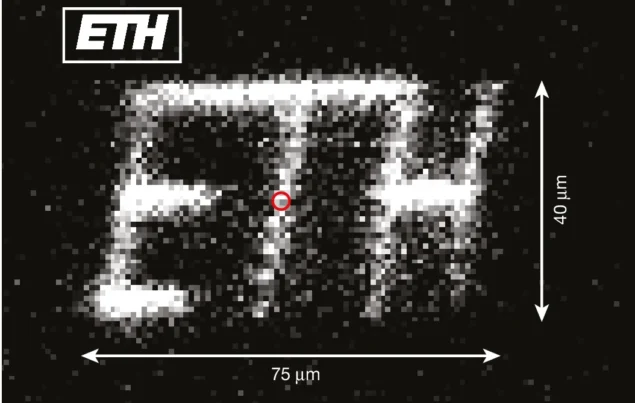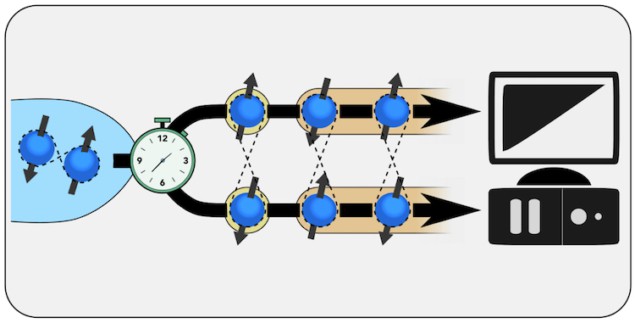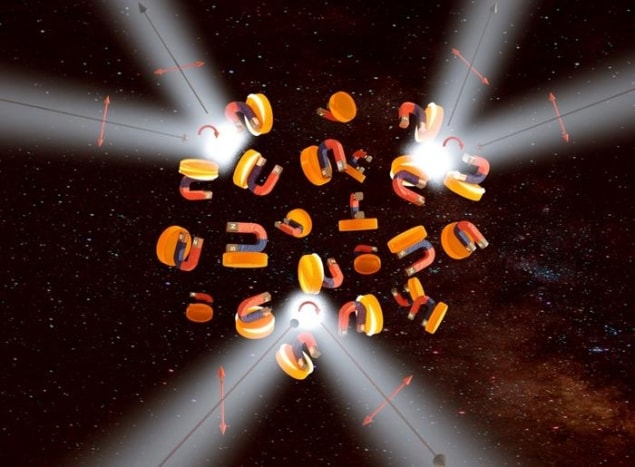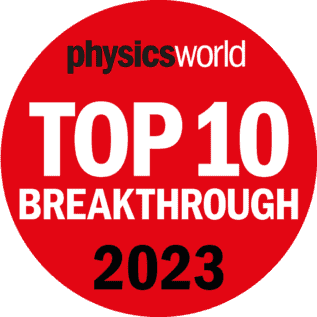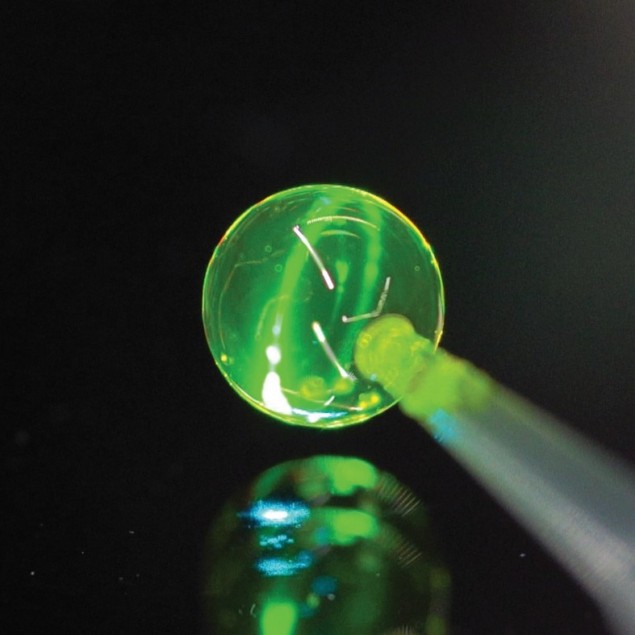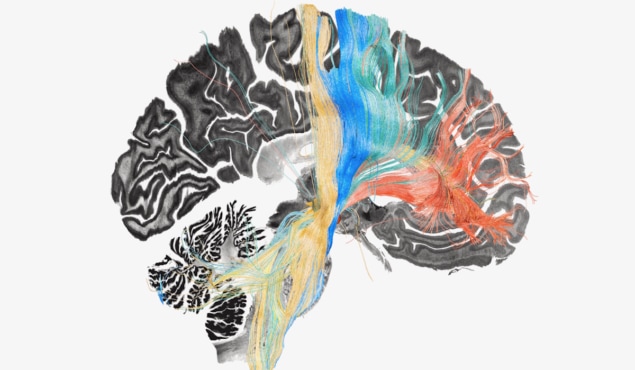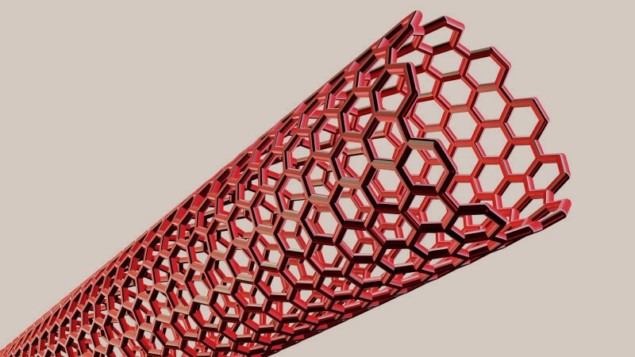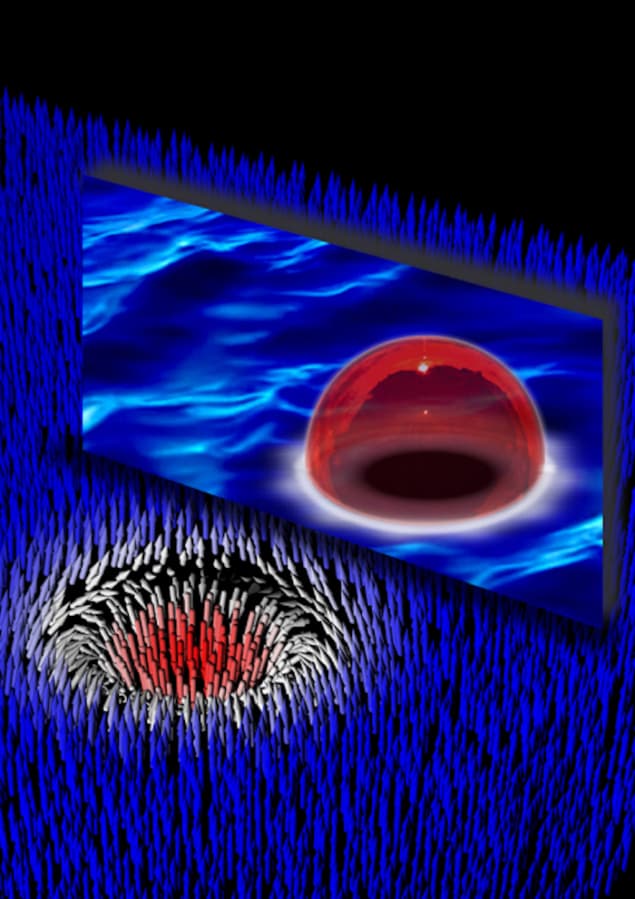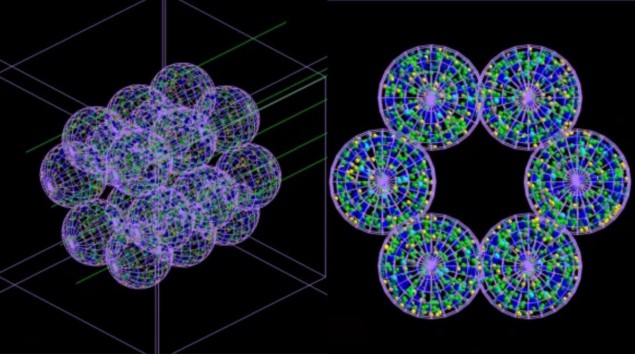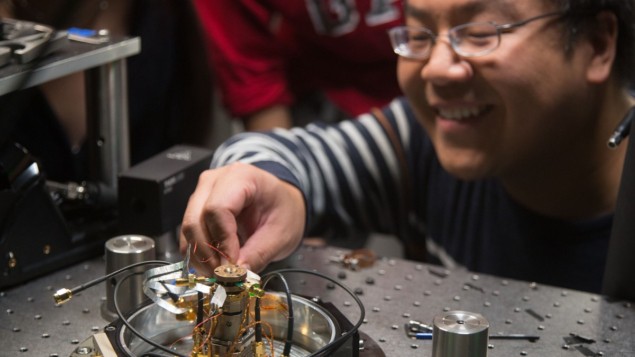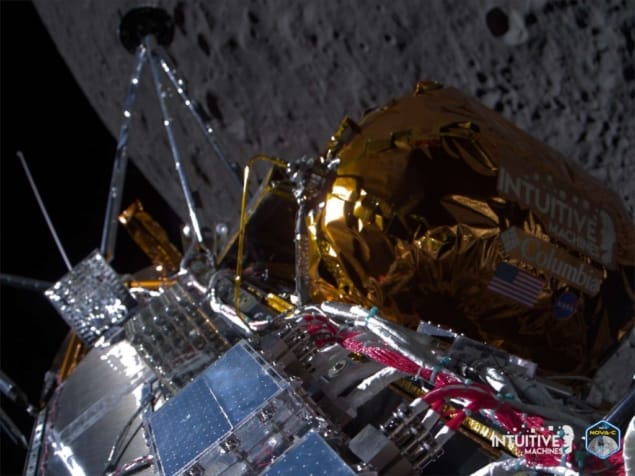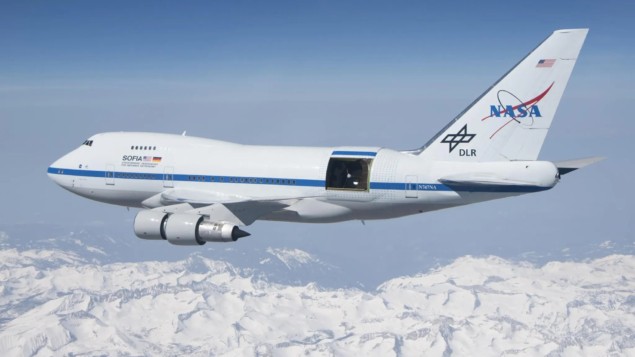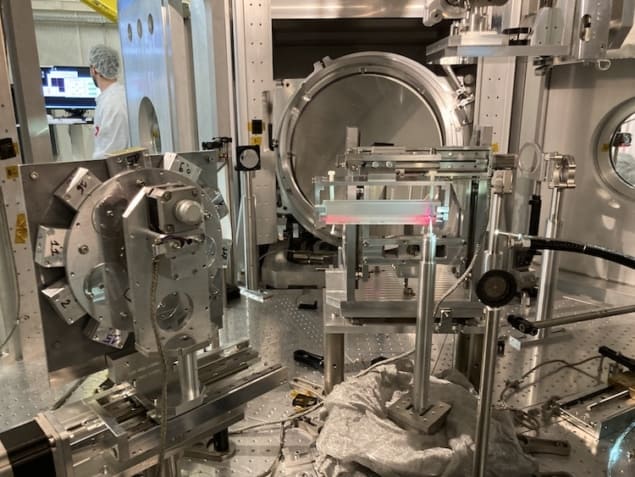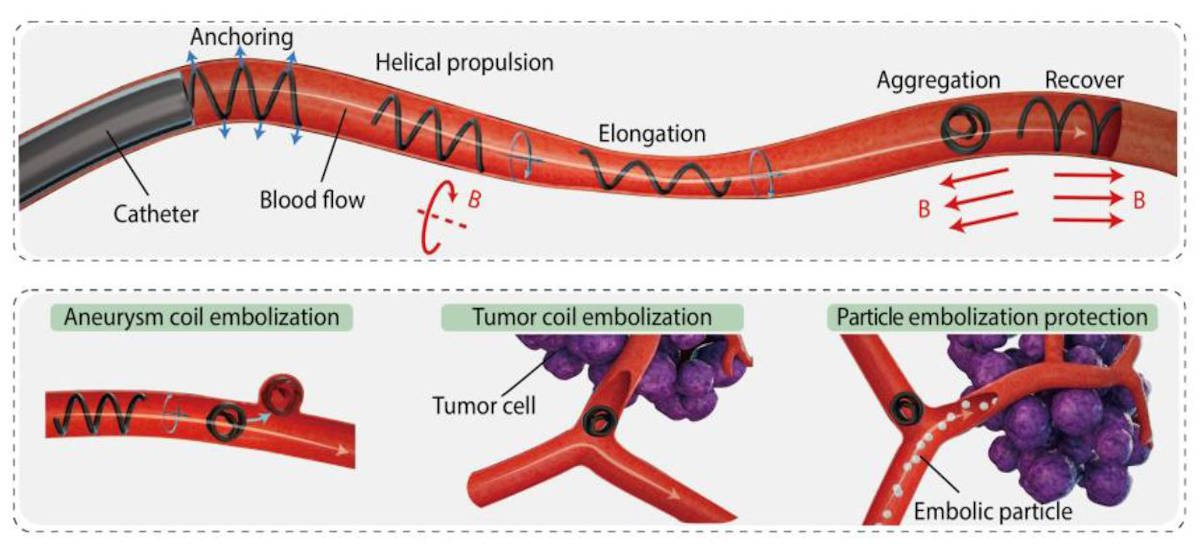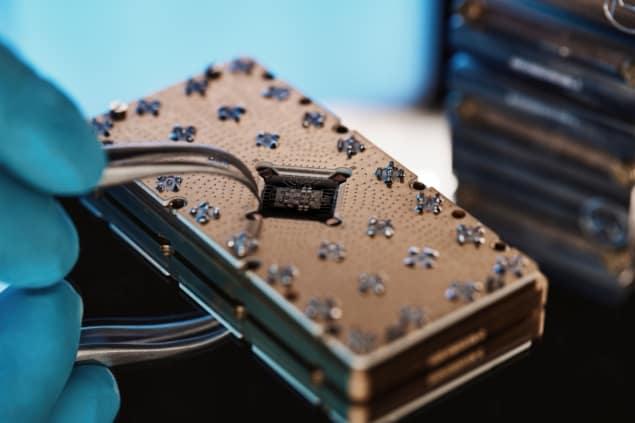Αναζήτηση αναρτήσεων
Σάββατο 30 Μαρτίου 2024
Seeing the wood for the trees: could forests be used as neutrino detectors?
Graphene-based materials show great promise for hydrogen transport and storage
Graphene-based materials show great promise for hydrogen transport and storage
Bionic jellyfish and more efficient windfarms: a conversation with John Dabiri
Bionic jellyfish and more efficient windfarms: a conversation with John Dabiri
Tackling climate change while improving human wellbeing
Tackling climate change while improving human wellbeing
Researchers reveal the fluid dynamics behind cicadas’ ‘unique’ urination
Researchers reveal the fluid dynamics behind cicadas’ ‘unique’ urination
When it comes to fish dynamics, there's a school
When it comes to fish dynamics, there's a school
Why error correction is quantum computing’s defining challenge
Why error correction is quantum computing’s defining challenge
Πέμπτη 28 Μαρτίου 2024
Scientists discovered that like-charged particles can sometimes attract
Scientists discovered that like-charged particles can sometimes attract
Superfluid helium: the quantum curiosity behind huge experiments like the LHC
Superfluid helium: the quantum curiosity behind massive experiments like the LHC
ELECTROMAGNETIC INDUCTION
Τετάρτη 27 Μαρτίου 2024
New ion-trapping approach could help quantum computers scale up
New ion-trapping approach could help quantum computers scale up
Controllable Cooper pair splitter could separate entangled electrons on demand
Controllable Cooper pair splitter could separate entangled electrons on demand
The ultraviolet dual-comb spectroscopy system counts single photons
The ultraviolet dual-comb spectroscopy system counts single photons
New metamaterial could make true one-way glass
New metamaterial could make true one-way glass
Physicists take the temperature of the second sound
Physicists take the temperature of the second sound
Physics World reveals its top 10 Breakthroughs of the Year for 2023
Physics World reveals its top 10 Breakthroughs of the Year for 2023
Soap bubbles transform into lasers
Soap bubbles transform into lasers
Τρίτη 26 Μαρτίου 2024
Mapping brain circuits reveals potential treatment targets for brain disorders
Mapping brain circuits reveals potential treatment targets for brain disorders
Functional ultrasound imaging provides real-time feedback during spinal surgery
Functional ultrasound imaging provides real-time feedback during spinal surgery
Why you shouldn’t be worried about talk of a ‘quantum winter’
Why you shouldn’t be worried about talk of a ‘quantum winter’
European Space Agency gives construction go-ahead for LISA gravitational-wave mission
European Space Agency gives construction go-ahead for LISA gravitational-wave mission
Δευτέρα 25 Μαρτίου 2024
The significance of bioelectricity function in robotic microsurgery technology and the procedural steps of implanting microchips in the human brain for functional body movement and thought-generating human movement commands
In recent years, there have been significant advancements in robotic microsurgery technology, particularly in bioelectricity functionality.
Bioelectricity refers to the electrical signals generated within living organisms, including humans. These signals control physiological functions such as muscle movement, sensory perception, and cognitive processes.
Integrating bioelectricity into robotic microsurgery technology has opened up new possibilities for improving surgical procedures' precision, efficiency, and effectiveness.
One of the critical areas where bioelectricity functionality is essential in robotic microsurgery technology is the development of brain-computer interfaces (BCIs). BCIs enable direct communication between the human brain and external devices, such as robotic limbs or computer systems. By harnessing the electrical signals generated by the brain, BCIs can allow individuals with physical disabilities to control prosthetic limbs or interact with digital interfaces using only their thoughts.
Carbon nanotubes make optical sensor flexible and ultrathin
Carbon nanotubes make optical sensor flexible and ultrathin
Can flexoelectricity explain the charging by friction conundrum?
Can flexoelectricity explain the charging by friction conundrum?
Drinking bird toy generates usable electricity
Drinking bird toy generates usable electricity
Physicists observe false vacuum decay in a ferromagnetic superfluid
Physicists observe false vacuum decay in a ferromagnetic superfluid
Radiology societies call for critical evaluation of AI, building the UK’s quantum workforce
Radiology societies call for critical evaluation of AI, building the UK’s quantum workforce
Modelling lung cells could help personalize radiotherapy
Modelling lung cells could help personalize radiotherapy
Compton camera measures gamma-ray polarization in nuclear physics experiment
Compton camera measures gamma-ray polarization in nuclear physics experiment
Diamond alignment makes high-pressure magnetometry of superconductors possible
Diamond alignment makes high-pressure magnetometry of superconductors possible
US Odysseus mission becomes first private craft to successfully land on the Moon
US Odysseus mission becomes first private craft to successfully land on the Moon
Battle for the skies: US insists GMT and TMT telescopes must vie for funding
Battle for the skies: US insists GMT and TMT telescopes must vie for funding
Could gravastars be nested inside one another like a Russian doll?
Could gravastars be nested inside one another like a Russian doll?
Κυριακή 24 Μαρτίου 2024
Water observed on asteroids for the first time
Water observed on asteroids for the first time
Space weather phenomenon observed in the lab for the first time
Space weather phenomenon observed in the lab for the first time
Could lasers synthesize heavy elements produced in neutron-star mergers?
Could lasers synthesize heavy elements produced in neutron-star mergers?
Παρασκευή 22 Μαρτίου 2024
Can you solve this quantum cryptic word search?
Can you solve this quantum cryptic word search?
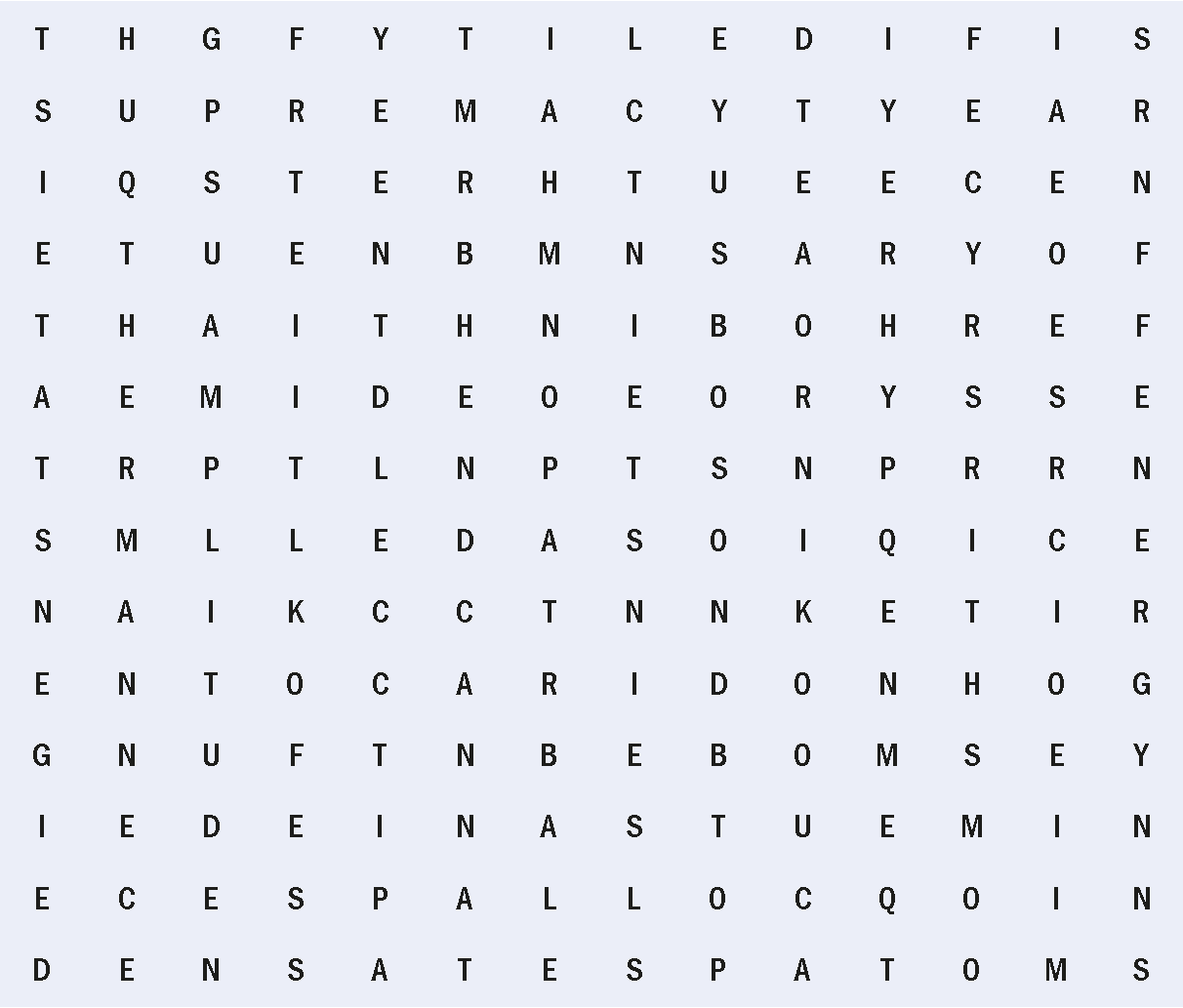
Wigner’s friend: the quantum thought experiment that continues to confound
Wigner’s friend: the quantum thought experiment that continues to confound
Πέμπτη 21 Μαρτίου 2024
New attosecond X-ray spectroscopy technique ‘freezes’ atomic nuclei in place
New attosecond X-ray spectroscopy technique ‘freezes’ atomic nuclei in place
Magnetic microbots show promise for treating aneurysms and brain tumours
Magnetic microbots show promise for treating aneurysms and brain tumours
Τετάρτη 13 Μαρτίου 2024
Cat qubits reach a new level of stability




